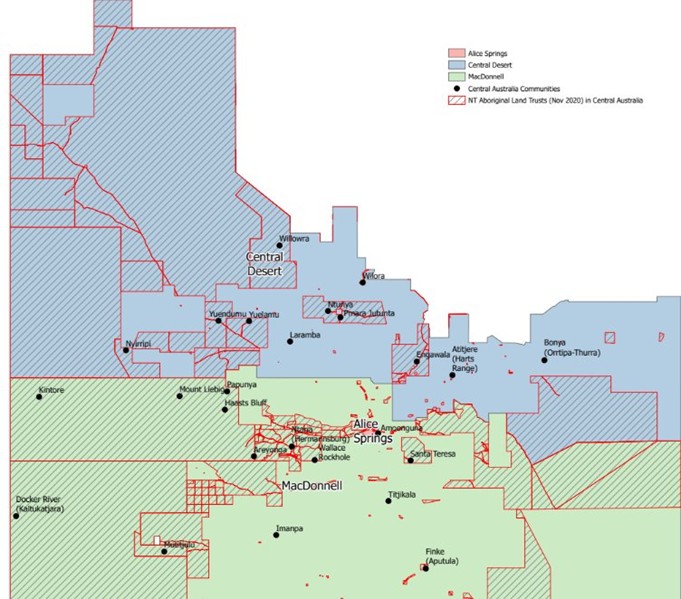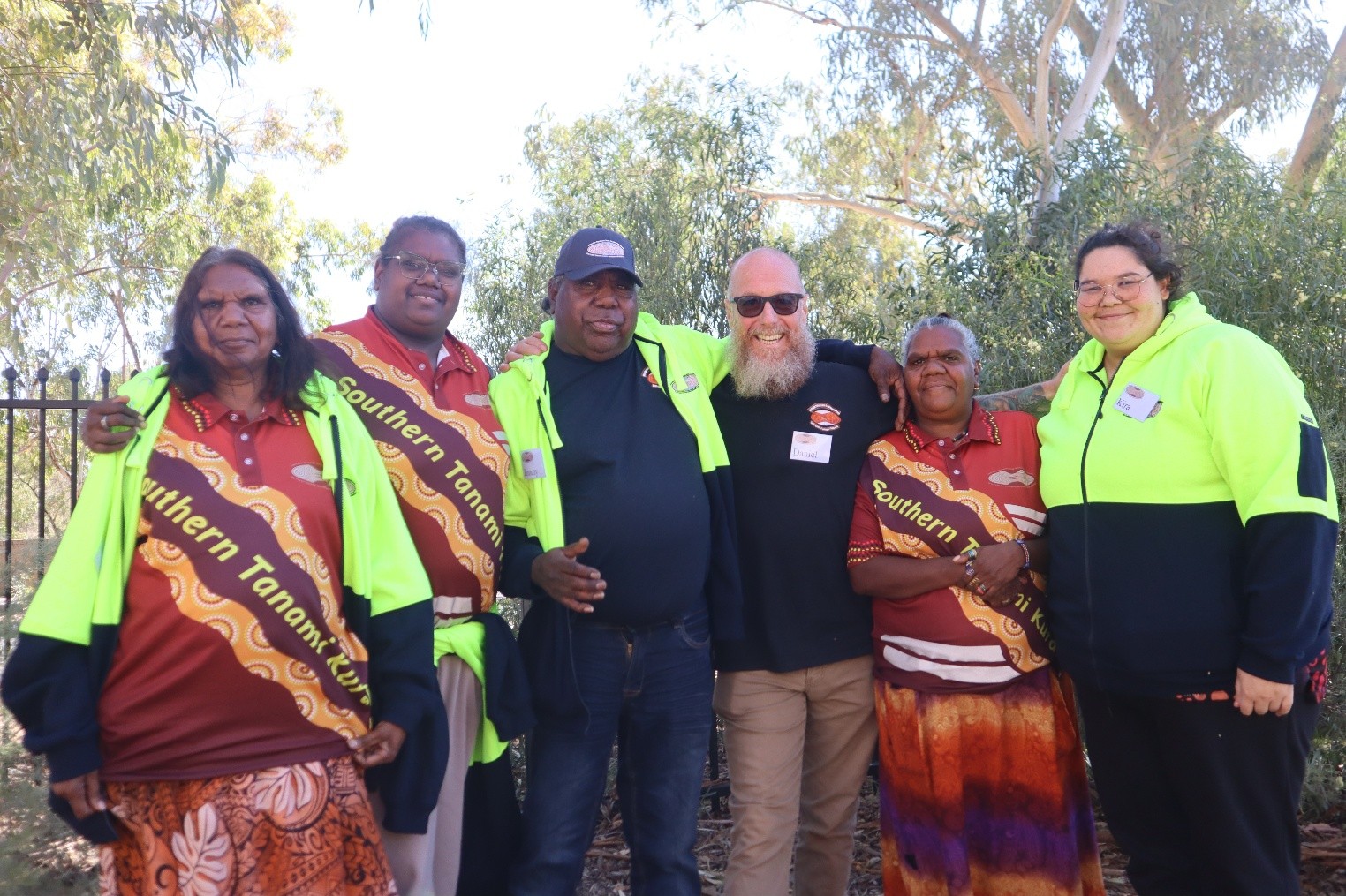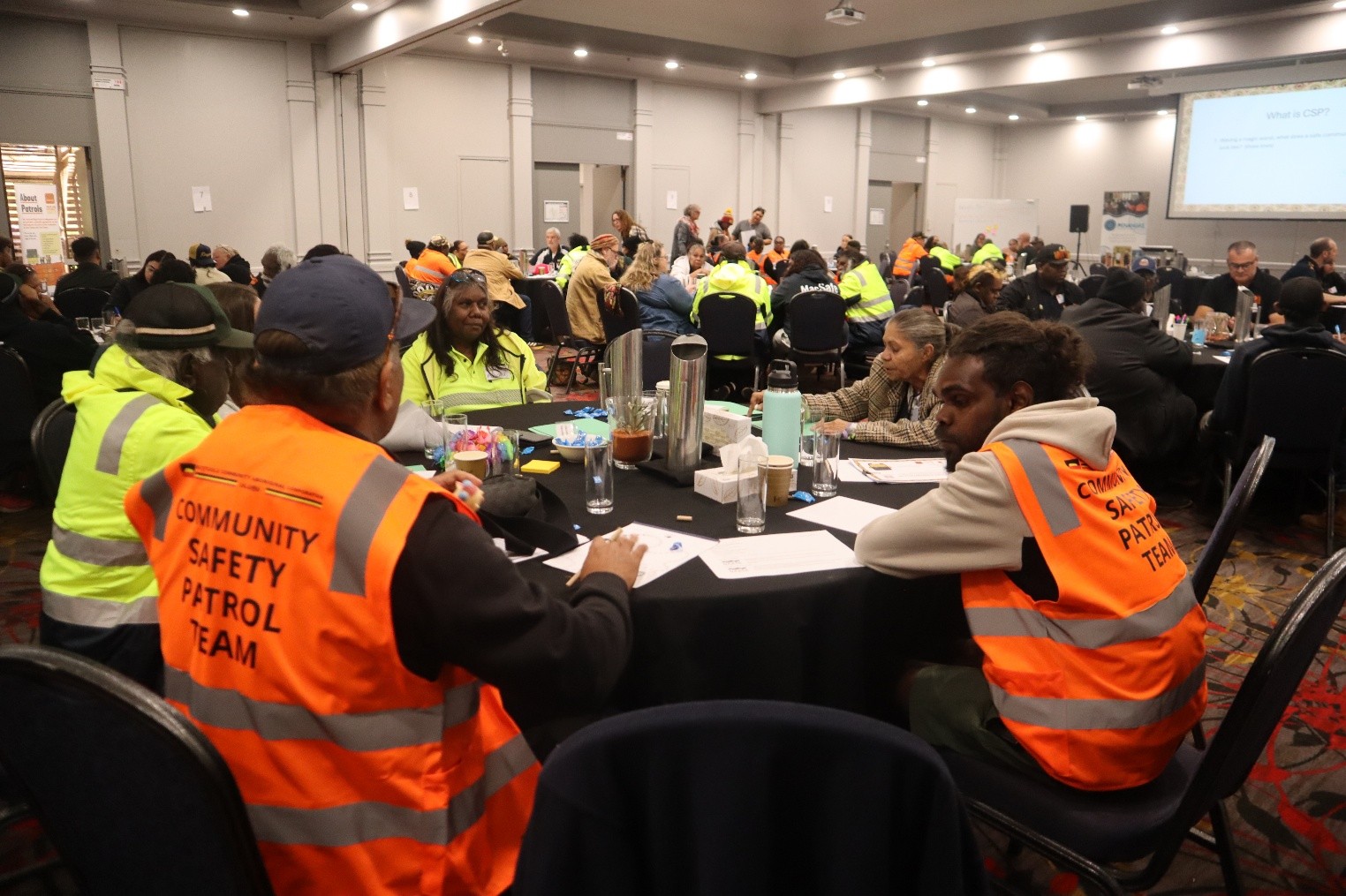The Australian Government is working with communities to deliver the plan for A Better, Safer Future for Central Australia (Central Australia Plan).
The Central Australia Plan is focused on addressing enduring challenges and working with communities and organisations on long-term solutions across six key areas:
- Improved community safety and cohesion
- Job creation
- Better services
- Preventing and addressing issues caused by Fetal Alcohol Spectrum Disorder (FASD)
- Investing in families
- On-Country learning
By listening to local peoples, Aboriginal Elders and community organisations, the Central Australia Plan provides a strategic investment for lasting change to improve the lives of First Nations people in the region.
Investment
To date, the total investment is over $350 million. This infographic outlines the funding allocation under the Central Australia Plan.
Delivering for Communities
The Australian Government is working with the Northern Territory Government and Central Australian communities to deliver programs and initiatives that improve the lives of First Nations people throughout the region.
Through the Central Australia Plan, communities in the region have seen:
- Improved access to preventative health services for children and families with early intervention, Fetal Alcohol Spectrum Disorder and Autism diagnosis and support
- Increased funding for every school in Central Australia, to get more kids to school and keep them there
- Increased funding for community safety, domestic violence services and youth services
- Better health and infrastructure
- More emergency accommodation and safe spaces for women and young people.
The Australian Government is continuing to listen to communities on what more can be done to build a better, safer future for Central Australia. The following projects are either underway or scheduled to commence as part of the Central Australia Plan include:
- more infrastructure in communities like sporting oval upgrades and play areas for children
- leadership programs to support people to lead change in their communities
- justice diversion programs for young people and adults
- junior ranger programs that engage young people in school and build skills and connection to Country
- up to seven remote training hubs where people can develop skills on Country in their communities
- more services for children and young people to thrive.
Central Australia Plan Aboriginal Leadership Group
The Aboriginal Leadership Group (ALG) was established in June 2023 to provide strategic advice to the Australian Government on delivering A Better, Safer Future for Central Australia.
Role and purpose
During the first phase of the Central Australia Plan, the ALG met monthly to advise on investments into key priorities. In July 2025, the ALG was extended to 30 June 2026 and now meets every six weeks to guide the next phase of delivery, and monitor and evaluate the progress of initiatives under the Central Australia Plan.
Since its establishment the ALG played a key role in shaping how funding under the Community Infrastructure Package is used to benefit remote Central Australian communities.
The ALG continues to advise on the design and delivery of key initiatives, including:
- Community Infrastructure Package
- Digital Connectivity
- Remote Training Hubs Network
To inform its advice, the ALG works closely with the Australian and Northern Territory governments, service providers, and draws on existing policies, programs and data. This ensures investments are grounded in local knowledge and community needs.
Membership and representation
To ensure strong local representation, the Minister invited councils and organisations working in Central Australia to nominate members to join the ALG.
Nominating organisations and groups include (but are not limited to):
- Central Land Council
- Lhere Artepe Aboriginal Corporation
- Central Australian Aboriginal Congress
- Central Desert Regional Council
- MacDonnell Regional Council
- Alice Springs Town Council
- An Elder representative
- A youth representative.
Meeting Communiqué
- Thursday, 25 September 2025 ( PDF 332KB | DOCX 5.82MB )
Central Australia Aboriginal Youth Roundtable
The Central Australia Aboriginal Youth Roundtable (the Roundtable) is a collaborative initiative between the NIAA, the ALG, and the Roundtable Chair and members. Together, they are co-designing the Roundtable’s structure and purpose to ensure it reflects the voices and priorities of young First Nations people in Central Australia.
This partnership creates a space for meaningful engagement between young people and government.
The Roundtable:
- Supports the development of young Aboriginal leaders across Central Australia
- Provides opportunities for young people to raise issues that matter to them
- Helps shape policies and programs that reflect youth perspectives and priorities
This initiative ensures that young voices are heard and valued in shaping the future of Central Australia.
Youth Services Action Plan
The Youth Services Action Pan (YSAP) identifies ways governments, community, philanthropic organisations and business could work together to address issues in delivering youth services for young Aboriginal people across the Central Australian region.
Some of the issues include coordination, workforce capacity and availability, funding, and monitoring and evaluation. Underpinning the plan is feedback from communities and stakeholders in the region.
About the region
Brief statistics on Central Australia:
- The Central Australia region includes the major centre of Alice Springs, as well as 26 communities, 16 town camps and over 200 outstations
- It has a population of over 38,100 people
- 41.2% of the population identify as Aboriginal across the region, and this increases to 80% of the population outside of Alice Springs
- 34.6% of the population are children and young people aged 0–24 years.
The language groups for the 26 Central Australia communities include: Eastern, Western and Central Arrernte, Warlpiri, Anmatyerr, Pitjanjatjara, Luritja/Pintupi, Southern Luritja/Pitjanjatjara and Alyawarr.

Recent Media Releases
- Supporting young people and developing future leaders in Central Australia | Ministers' media centre
- Preparing for a safer summer in central Australia | Ministers' media centre
- Investing in Central Australia | Ministers' media centre
All Media Releases on the Central Australia Plan are available on the Department of Prime Minister and Cabinet website.


